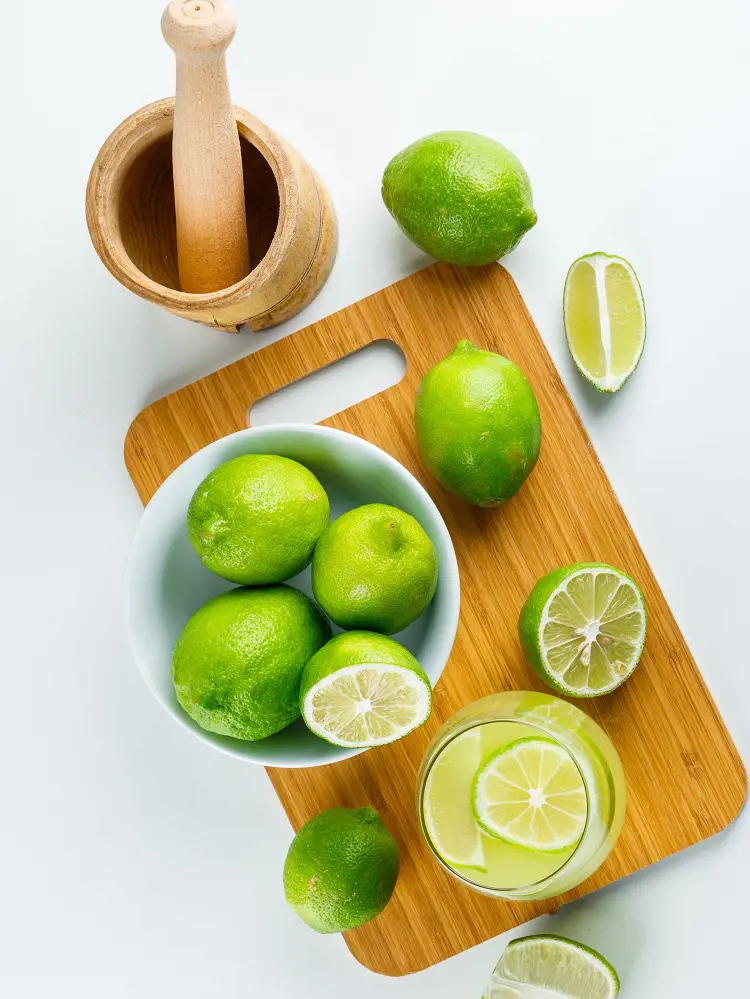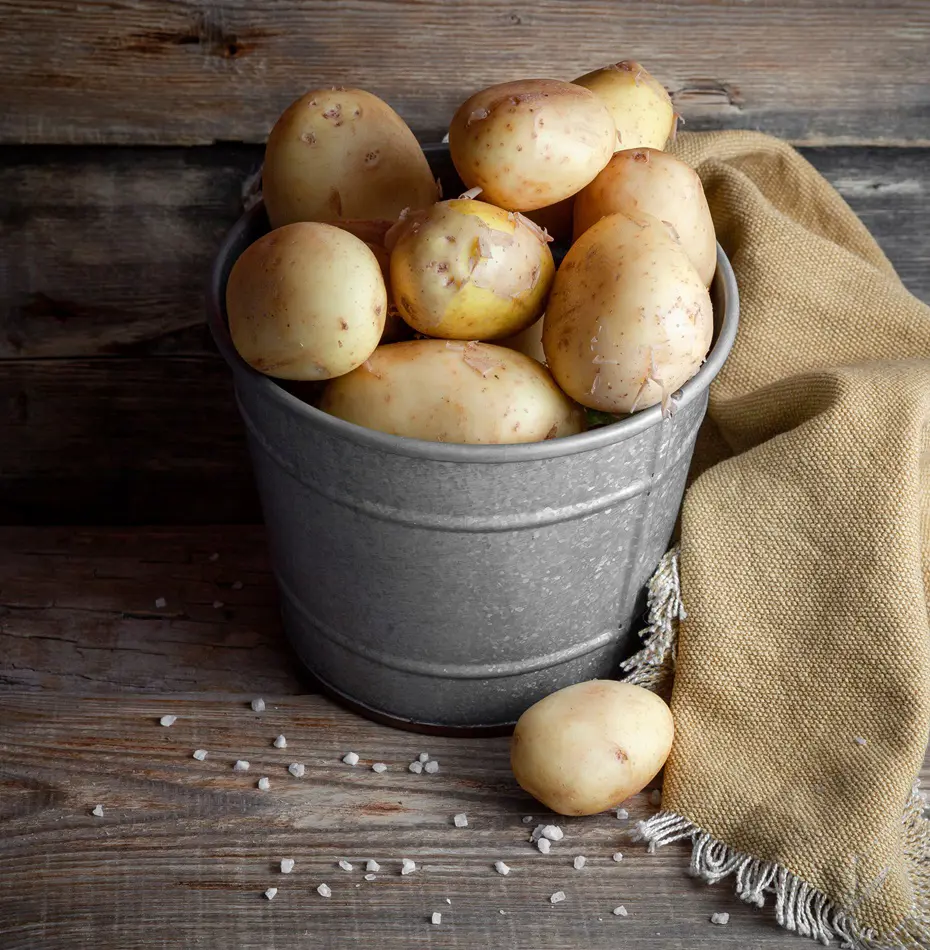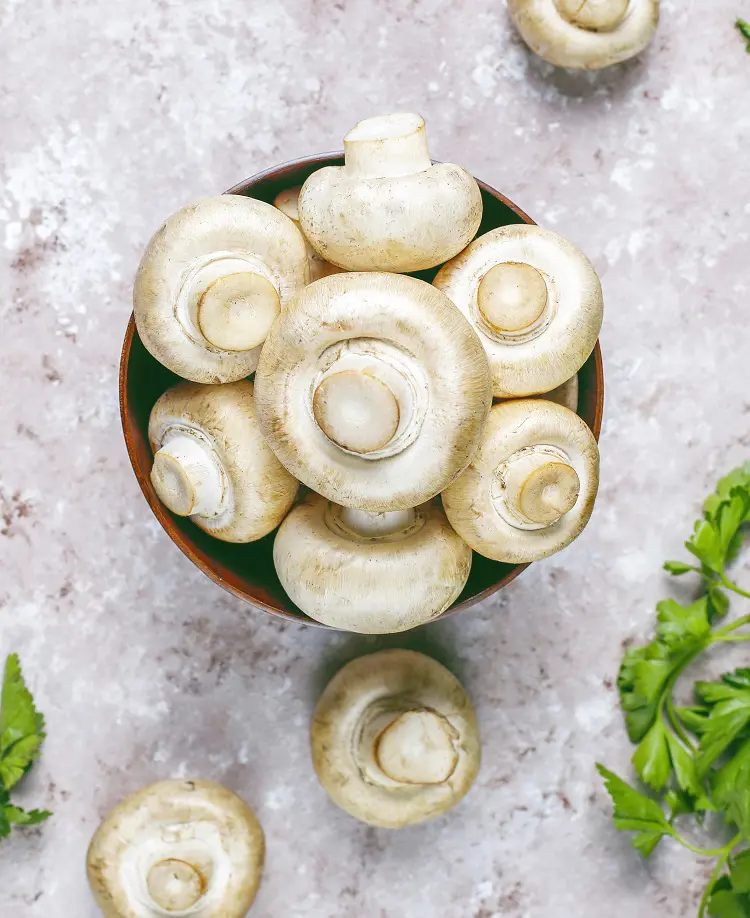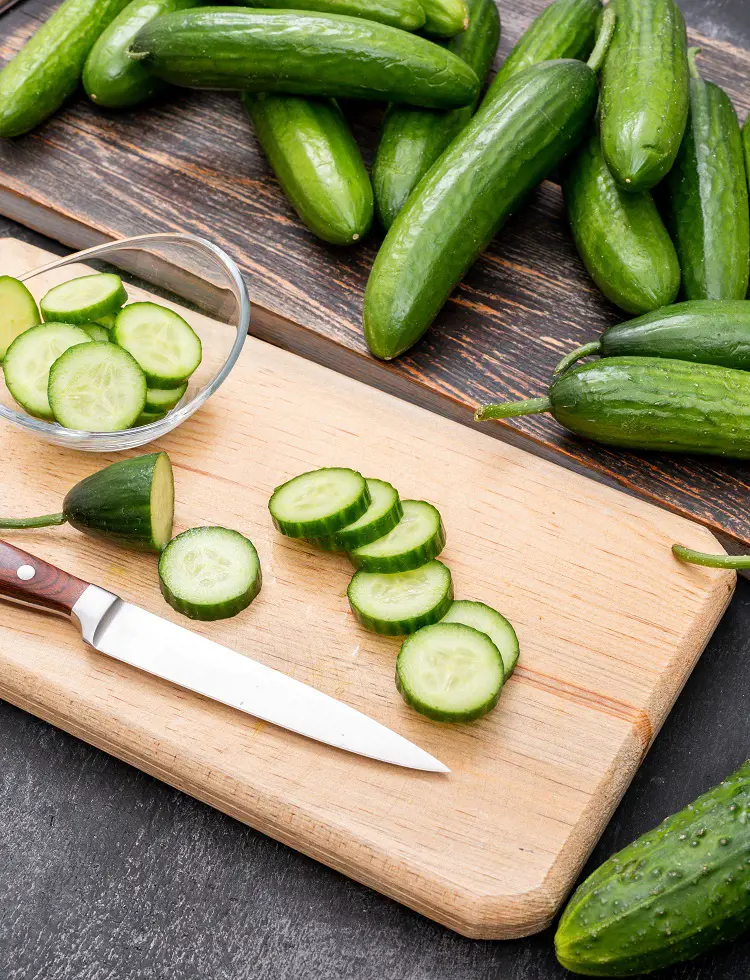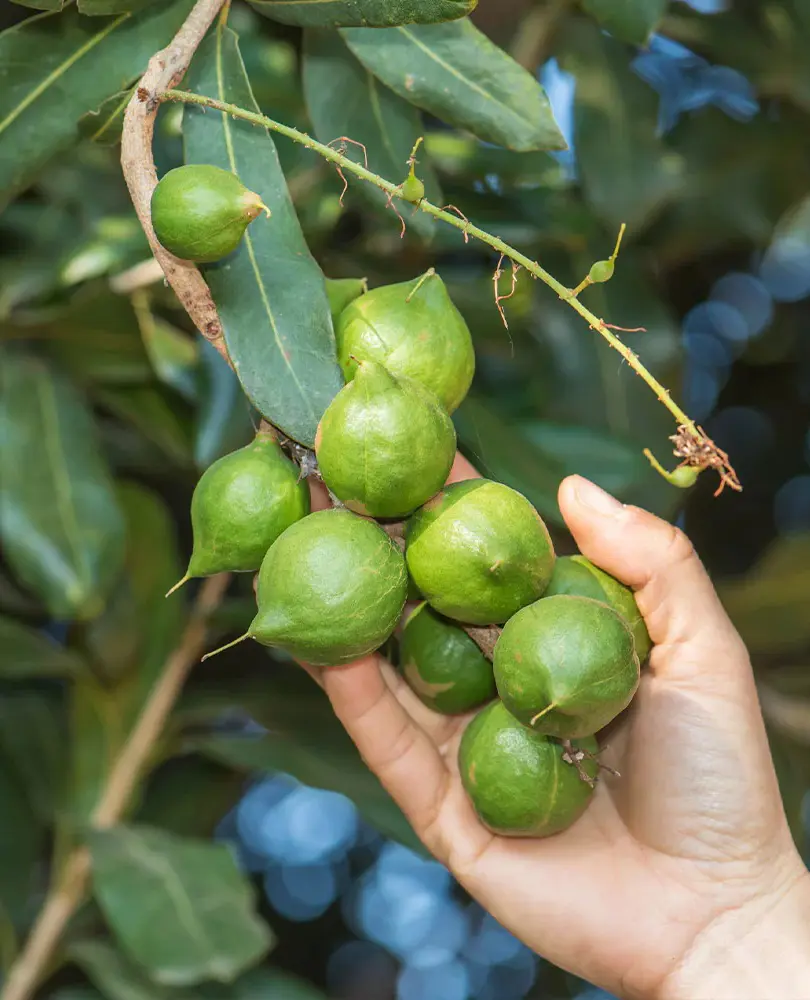
Cherries are a tasty, sweet, and tart-flavored fruit that has captured the hearts of people for centuries. These little stone fruits come in a surprising variety, from the deep red Bing cherries to the bright yellow Rainier varietal. But beyond their delightful taste, cherries offer a surprising amount of nutrition.
It's summer and you buy a big batch of cherries from a farmers market or harvest them from your garden and aim to store them for an extended period. But how can you keep them fresh for longer enjoyment? Worry not, as here are some tips and tricks that might make storing cherries a bit easier. Let's begin!
What Are Cherries?
Cherries are small, round fruits, which taste like a burst of sunshine in a single bite. Boasting a vibrant red hue, cherries have a central pit surrounded by a juicy fleshy interior. They dangle from cherry trees, easily identified by their bright green stems and shiny, slightly tough skin.
Cherry orchards dot the landscapes of the western and midwestern United States, but these delightful fruits are a global phenomenon with over a thousand varieties.
From the sweetness of Bings to the tang of Rainiers, their flavor profile ranges from light orange to deep purple, offering something for every taste bud.

While cherry season is summer, this tasty fruit prefers cool weather and requires a specific number of nighttime chills to bloom. This means tropical climates won't be seeing cherry trees anytime soon. Cultivated for centuries, cherries boast a rich history dating back to ancient Rome and Asia.
In some parts of the world, they hold deep cultural significance. Japan, for example, celebrates the fleeting beauty of cherry blossoms with the beloved tradition of hanami, or cherry blossom viewing.
How Long Do Fresh Cherries Last?
Although cherries are a delightful treat, their shelf life depends on how you store them. Unfortunately, leaving them at room temperature is a recipe for mushy disappointment, as they'll spoil within a day or two. The good news is, that proper storage can extend their lifespan significantly!
By keeping them in the refrigerator and following tips like avoiding washing them until just before use, you can enjoy these juicy gems for up to a week or even ten days in some cases.
How to Keep Cherries Fresh?
As cherries crave the cold, the first and most crucial step is temperature control. As soon as you get home from the store, transfer them directly from the bag to the refrigerator.
The cool environment slows down the ripening process and prevents them from spoiling prematurely. Ideally, aim for a temperature between 30-32 degrees Fahrenheit (around -1 to 0 degrees Celsius).
Secondly, moisture is another enemy of cherries, so avoid washing them until you're ready to eat them. If the cherries appear damp when you buy them, gently pat them dry with a clean paper towel. When storing, don't crowd the cherries! Spread them out in a single layer in a colander or a shallow container.
This allows for good air circulation and prevents them from getting bruised by each other and also removes any excess water and prevents accelerated spoilage.
Last but not least, lining your storage container with paper towels can be a lifesaver. The paper towels will absorb any extra moisture that might accumulate during storage, further extending the life of your cherries.
By following these simple techniques, you can enjoy these delightful fruits for a week or even up to ten days in some cases!
Where to Store Cherries?
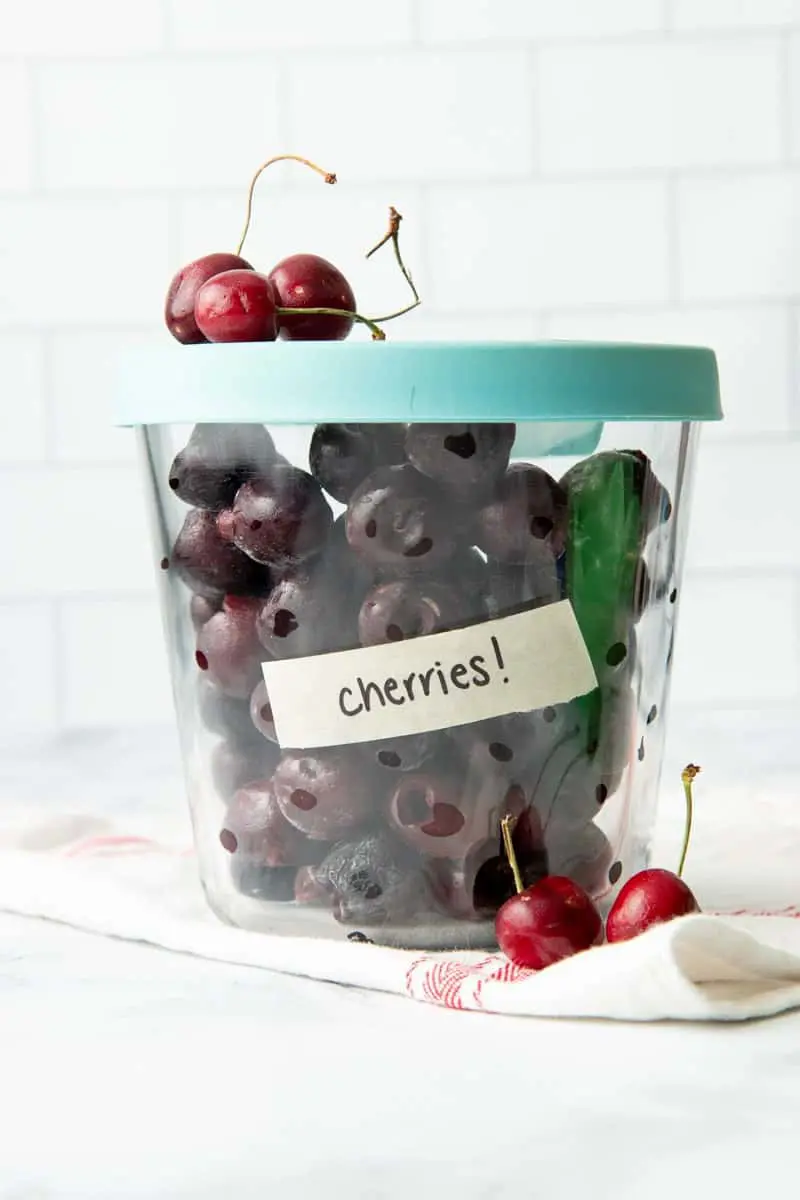
As cherries thrive in cold environments, the best place to store them is definitely the refrigerator. Why is the fridge the perfect spot for your cherries, you ask? The consistent coolness of the fridge keeps the cherries fresh and prevents them from getting mushy.
The coolness also slows down the natural ripening process, allowing you to enjoy them longer. Similarly, cooler temperatures inhibit the growth of bacteria and mold, which can cause spoilage.
As it is established that a refrigerator is the best place to keep your cherries, avoid storing them at room temperature as they'll spoil much faster. But if you really want to store them out in the open, make sure to keep them in a dark spot with less to no sunlight.
Are you wondering why? The room's warmth accelerates ripening and makes them lose their firmness and sweetness, making them go bad within a day or two.
How to Store Cherries in Fridge?
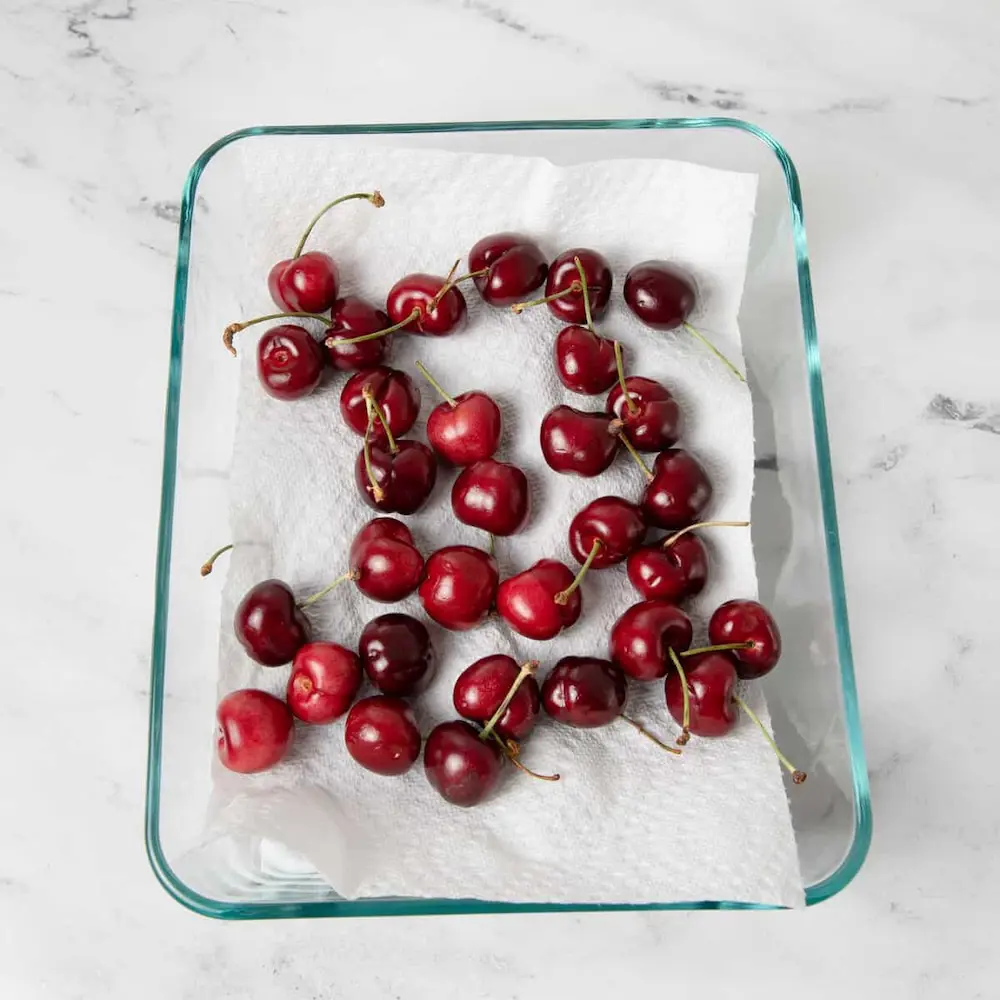
1. Keep it Dry
Cherries don't need a bath until you're ready to eat them, but washing them beforehand can trap moisture and accelerate spoilage. If your cherries seem a little damp when you buy them, gently pat them dry with a clean paper towel to remove any excess moisture. Also, line your storage container with paper towels, as these absorbent heroes will soak up any extra moisture that might accumulate during storage.
2. Space it Out
Don't crowd the cherries! Spread them out in a single layer in a colander or shallow container. This allows for good air circulation and prevents them from getting bruised by each other.
3. Leave the Stems
If you have a lot of cherries and space is tight, consider removing the stems just before eating. This can save some space in your container.
How to Freeze Cherries?
Freezing is also one of the best way to store cherries for an extended period of time. But to maintain their taste and freshness, there are some steps to follow, and they are as follows-
For Short Term Storage
• Clean and Sort: First things first, give your cherries a good look-over. Discard any that are moldy, bruised, or have burst open. Then, rinse the good ones with cold water and pat them dry completely with a clean paper towel.
• Take the Pit Out: Secondly, use a cherry pitter or get creative with a straw to remove the pits from each cherry. This will save space when freezing and make them easier to use later.
• Spread it: Spread the pitted cherries out on a baking sheet lined with parchment paper in a single layer. This step ensures they freeze individually and don't clump together into a giant cherry block.
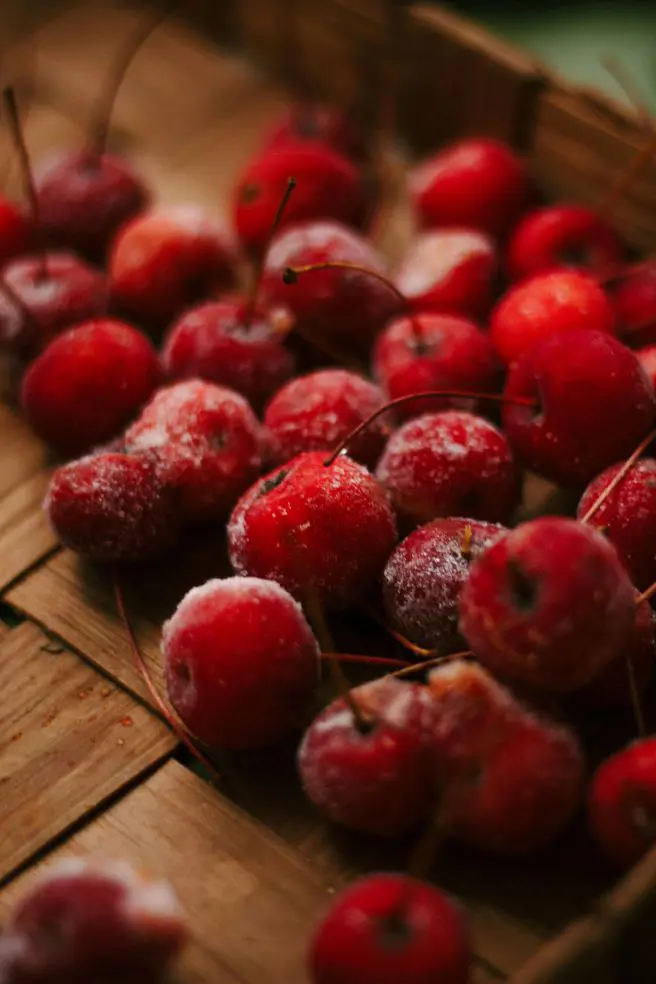
For Long Term Storage
• Flash Freeze: Lastly, place the baking sheet with the cherries in the freezer for at least 2-3 hours or until they're mostly frozen solid. This flash-freezing step prevents them from sticking together when stored long-term.
• Bag it Up: Once the cherries are flash-frozen, transfer them to a freezer-safe bag or airtight container. Squeeze out as much air as possible to prevent freezer burn.
• Label it: Don't forget to label the bag or container with the date! This will help you keep track of how long they've been frozen.
If you plan to use the frozen cherries for baking or smoothies, you can slice them in half before flash freezing for easier use.
Store Fresh Picked Cherries as Pickles

While fresh cherries are delicious, pickling them offers a unique and tangy way to enjoy them beyond their fresh season. Pickling extends the shelf life of cherries, allowing you to savor their flavor even after fresh cherries are gone. Storing cherries isn't so hard after all! Pickled cherries are incredibly versatile.
You can enjoy them on their own as a snack, add them to salads and charcuterie boards for a surprising pop, or even use them in cocktails for a unique twist.
However, it's important to note that fresh cherries aren't the ideal candidate for typical pickling methods used for vegetables as their soft texture can become mushy after pickling.
So, if you want to pickle your cherries, do not plan to use them for the long term. Just pickle them and savor them for a day or two!
Drying the Cherries
Drying cherries is another fantastic way to preserve and enjoy their sweetness year-round. These dried cherries are fantastic for snacking or baking. Here's how to turn your favorite summer fruit into a delightful dried treat:
Dehydrator
• Give your cherries a good rinse with cold water and pat them dry with a clean paper towel. Discard any bruised, moldy, or damaged ones.
• Then, remove the pit and slice the dried cherries in half. If you prefer smaller dried cherries, you can slice them in quarters.
• Now, spread the sliced cherries on the dehydrator trays in a single layer, ensuring they don't touch.
• Set the dehydrator to a temperature between 135°F (57°C) and 165°F (74°C) according to your dehydrator's manual.
• Drying time can take anywhere from 12 to 36 hours, depending on the thickness of the cherries and your dehydrator's power.
• Lastly, once the machine is off, ensure those cherries are leathery and slightly sticky but not mushy.
• Store them in an air-tight container and enjoy them in your trail mix or smoothies; enjoy them as it is.
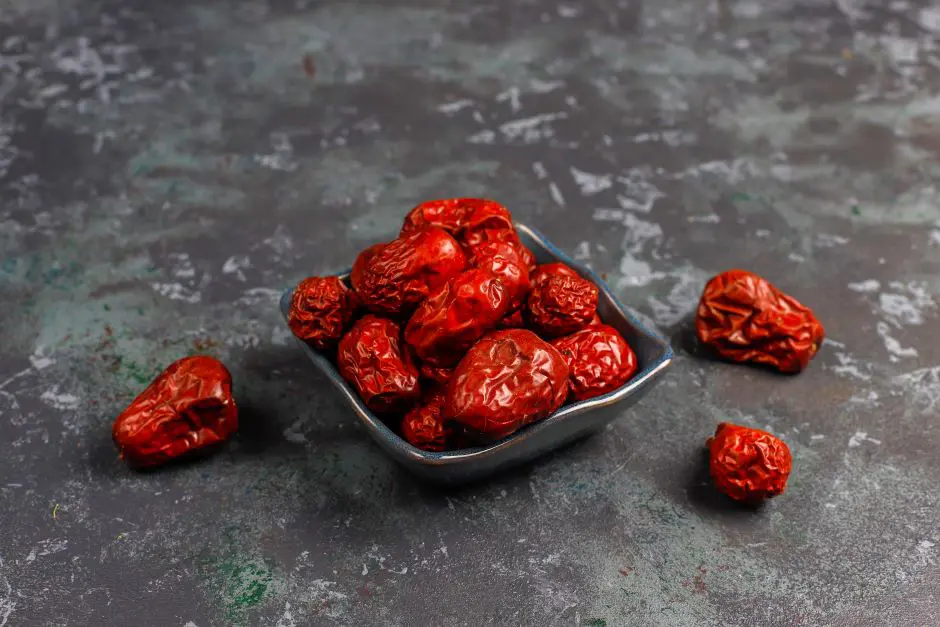
Oven
But if you don't own a drying machine, you can also use your oven to dry them up. This method requires more attention but can still work.
• First, set your oven to its lowest temperature setting, ideally between 150°F (66°C) and 200°F (93°C).
• Secondly, line baking sheets with parchment paper and spread the pitted cherries in a single layer.
• Meanwhile, keep the oven door slightly ajar to allow moisture to escape.
• Rotate the baking sheets every few hours and check on the cherries frequently.
• Drying time can vary greatly depending on your oven and the size of the cherries, so keep an eye on them to avoid burning.
• Once the cherries are dry, let them cool completely before storing.
• Transfer the dried cherries to an airtight container. Glass jars with tight-fitting lids are ideal.
• Store the container in a cool, dark place, away from direct sunlight or heat.
Jams and Jellies
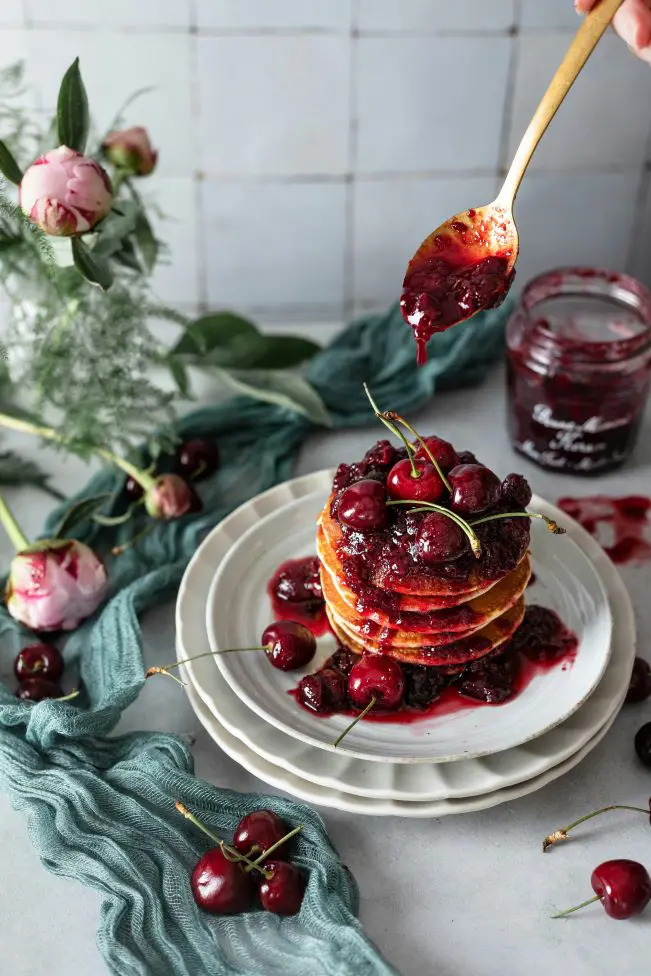
Homemade cherry jams and jellies are a delightful way to capture the essence of summer and enjoy the taste of these delicious fruits throughout the year. With a bit of planning and effort, you can create delicious spreads that are perfect for breakfast, snacks, or even homemade gifts!
Sweet cherries like Bings are perfect for jams with a rich, fruity flavor. Tart cherries, like Montmorency, on the other hand, create tangy jellies that pair beautifully with cheese or savory dishes.
You can even combine sweet and sour cherries for a complex flavor profile. While both jams and jellies are delicious ways to preserve fruit, there's a key difference.
Jams utilize the whole fruit, including the flesh and sometimes even the skin, resulting in a thicker spread with visible fruit pieces. Meanwhile, jellies use only strained fruit juice, creating a smoother, more transparent spread with a slightly firmer texture.
The Basics of Making Jams and Jellies:
•Prep the Cherries: Firstly, thoroughly wash, pit, and chop your cherries.
• Cooking with Sugar: Combine the cherries with sugar in a large pot to helps draw out the natural fruit juices.
• Adding Pectin (Optional): Pectin is a natural thickening agent sometimes used in jams and jellies. It helps achieve the desired consistency, especially for jellies.
• The Boiling Point: Bring the mixture to a rolling boil, following the recipe's instructions for cooking time to ensures proper gelling and food safety.
• Filling and Sealing: Once the desired consistency is reached, carefully fill sterilized jars with the hot jam or jelly, leaving a small headspace. Seal the jars tightly.
•Processing (Optional): Depending on the recipe, you may need to process the sealed jars in a boiling water bath to ensure proper storage.



